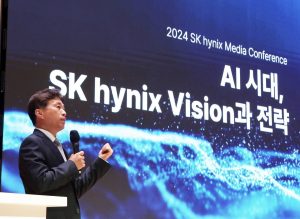Popular Keywords
- About Us
-
Research Report
Research Directory
Semiconductors
LED
Consumer Electronics
Emerging Technologies
- Selected Topics
- Membership
- Price Trends
- Press Center
- News
- Events
- Contact Us
SK Hynix
News

[News] Samsung vs SK hynix: Divergent Approaches for NVIDIA GTC 2025
With NVIDIA’s GTC 2025 approaching, South Korean memory giants Samsung and SK hynix are both gearing up—but with different approaches. Interestingly, according to a report from the bell, while Samsung plans to showcase a wide range of technologies, from memory chips to liquid cooling, SK hynix a...
News

[News] Where is the “Spring” of the Memory Market?
As 2025 begins, among the three major end-application markets for memory, the recovery momentum for mobile phones and laptops remains weak. Meanwhile, servers, driven by the strong demand for AI continue to grow steadily, which is expected to further drive semiconductor development. AI presents n...
News

[News] SK hynix Rides AI Wave, Announces Historic 15-Month Year-End Bonus
A report from ijiwei, citing Chosun Biz, notes that SK hynix, which is expected to record its highest-ever performance, has decided to distribute performance bonuses amounting to 1,500% of employees’ monthly base salaries. The report highlights that this is equivalent to 15 months of annual sal...
News

[News] SK Hynix Sets 2024 Record, Surpasses Samsung in Q4 Profit for the First Time
SK hynix announced today that it recorded best-ever yearly performance with 66.1930 trillion won in revenues, 23.5 trillion won in operating profit with an operating margin of 35%, and 19.8 trillion won in net profit with a net margin of 30%. SK hynix’s yearly revenues marked all-time high, exc...
News

[News] SK hynix Reportedly Set 1c DRAM Mass Production in Feb, While Samsung Delays by Six Months
Ahead of SK hynix’s upcoming fourth-quarter results announcement, another Korean memory giant, Samsung, may be in trouble again. According to MoneyToday, the company has delayed the development of its 10nm-class sixth-generation (1c) DRAM by another six months, postponing the target date to June, ...
- Page 2
- 43 page(s)
- 213 result(s)





